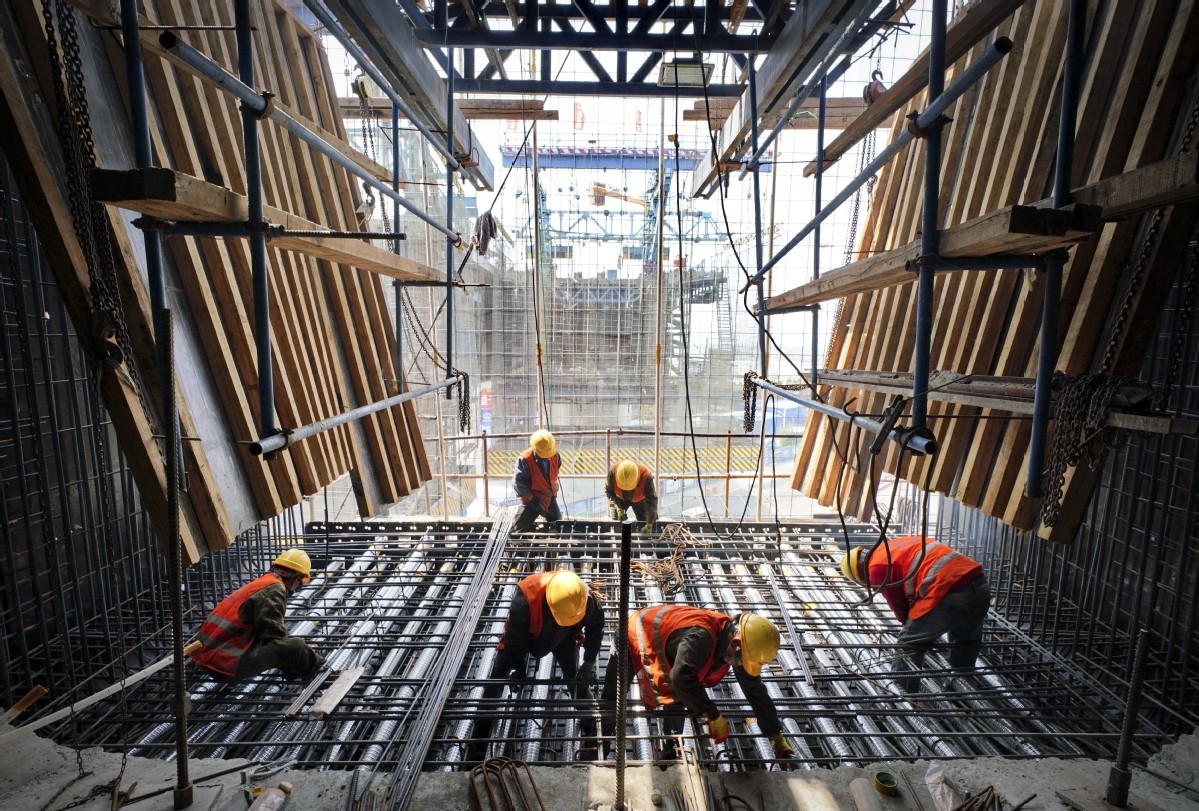
Workers at the construction site of an intercity railway linking Beijing with Tangshan, Hebei province. (Photo: Xinhua)
New 10,000-km transport network to boost development of 3 key regions
China will start construction of 10,000 kilometers of intercity, urban and suburban railway lines over the next five years in the Beijing-Tianjin-Hebei region, the Yangtze River Delta region and the Guangdong-Hong Kong-Macao Greater Bay Area, the nation's top economic regulator said on Friday.
Experts said the new plan is part of the government's ongoing efforts to encourage the coordinated development of the three key regions, boost connectivity and fuel economic growth.
The National Development and Reform Commission said the railway network will play a key role in boosting the integrated development of the three key areas, addressing weak links in regional comprehensive transportation and building of China's new "dual circulation" development pattern.
By 2025, an intercity, urban and suburban railway network will be basically formed, building a one-to two-hour traffic circle in the city clusters and a one-hour commuting circle in the metropolitan area, the NDRC said.
"It is of great significance for China to build railway networks in the three key regions during the 14th Five-Year-Plan period (2021-2025)," said Wang Yong, a visiting professor at the KTH Royal Institute of Technology in Stockholm, Sweden."It will further facilitate the transport of resources, promote regional economic development, boost connectivity and consolidate poverty alleviation."
According to Wang, the new plan is also in line with the central government's recent decision to construct a modern logistics system to support the dual-circulation development pattern.
Under the new plan, the government will allocate more investment for key railway projects, especially infrastructure investment in high-efficiency transport, for the next five years, said Wang.
The NDRC also stressed on more efforts to establish an efficient and coordinated promotion mechanism, speeding up the preliminary work on the projects, dismantling the traditional method of operations, and encouraging private sector participation in railway projects.
Wang Peng, a distinguished research fellow with the Communication University of China, said private sector participation in infrastructure projects will inject new impetus into the economy and foster sustainable and high-quality development in the long run.
"Specifically, it will encourage more market players to participate in infrastructure construction, which will improve social equity and increase capital utilization. It will also help support the private sector development and create more job opportunities," said Wang.
China has been actively speeding up coordinated development of key regions including the Beijing-Tianjin-Hebei region, the Yangtze River Delta region and the Guangdong-Hong Kong-Macao Greater Bay Area, in a bid to further promote regional development and new urbanization.
Under China's national strategy to drive the coordinated development of key areas, it is necessary to accelerate the construction of key transport projects, said Hungchih Liu, senior vice-president of infrastructure consultancy company AECOM Asia-Pacific.


